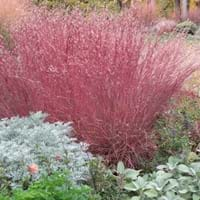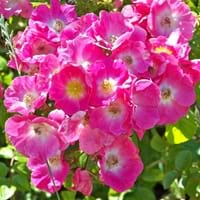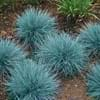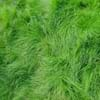Life Span
Annual
Annual and Perennial
Origin
North America, United States, Northeastern United States, Mid-Atlantic United States, Southeastern United States, North-Central United States, Central United States, South-Central United States, Southwestern United States, Mexico
Hybrid origin
Types
Greener Pastures
it is a type of rose
Habitat
Grassland
Not Available
USDA Hardiness Zone
4-9
5-8
AHS Heat Zone
10 - 3
10-1
Sunset Zone
1a, 1b, 2a, 2b, 3a, 3b, 4, 5, 6, 7, 8, 9, 10, 11, 12, 13, 14, 15, 16, 17, 18, 19, 20, 21, 22, 23, 24
A1, A2, A3, H1, H2, 1a, 1b, 2a, 2b, 3a, 3b, 4, 5, 6, 7, 8, 9, 10, 11, 12, 13, 14, 15, 16, 17, 18, 19, 20, 21, 22, 23, 24
Habit
Clump-Forming
Vining/Climbing
Minimum Width
Not Available
Flower Color
Purple
White, Pink
Flower Color Modifier
Bicolor
Not Available
Fruit Color
Not Available
Non Fruiting Plant
Leaf Color in Spring
Light Green
Dark Green
Leaf Color in Summer
Light Green
Dark Green
Leaf Color in Fall
Red, Purple
Dark Green
Leaf Color in Winter
Tan
Light Green
Leaf Shape
Grass like
Oval
Plant Season
Summer, Fall, Winter
Summer
Sunlight
Full Sun, Partial Sun
Full Sun, Partial Sun
Type of Soil
Loam, Sand
Loam, Sand
The pH of Soil
Acidic, Neutral, Alkaline
Acidic, Neutral
Soil Drainage
Well drained
Well drained
Bloom Time
Late Summer, Early Fall
Summer, Late Summer
Tolerances
Drought
Drought
Where to Plant?
Ground
Container, Ground, Pot
How to Plant?
Divison, Seedlings
Divison, Seedlings
Plant Maintenance
Medium
Medium
Watering Requirements
Medium
Water Deeply, Water in morning to avoid prompting diseases
In Summer
Lots of watering
Lots of watering
In Spring
Moderate
Moderate
In Winter
Average Water
Average Water
Soil pH
Acidic, Neutral, Alkaline
Acidic, Neutral
Soil Type
Loam, Sand
Loam, Sand
Soil Drainage Capacity
Well drained
Well drained
Sun Exposure
Full Sun, Partial Sun
Full Sun, Partial Sun
Pruning
Remove damaged leaves, Remove dead branches, Remove dead leaves
Prune after flowering, Remove damaged leaves, Remove dead branches
Fertilizers
All-Purpose Liquid Fertilizer
Fast release fertilizer, Fertilize in early spring, Fertilize three times a year
Pests and Diseases
Red blotch
Aphids, Black Spot, Caterpillars, Downy mildew, glasshouse red spider mite, Insects, Leaf Hoppers, Powdery mildew, rose leaf-rolling sawfly, Rust, Scale
Plant Tolerance
Drought
Drought
Flower Petal Number
Single
Single
Foliage Texture
Fine
Medium
Foliage Sheen
Matte
Glossy
Attracts
Butterflies
Not Available
Allergy
Not Available
Not Available
Aesthetic Uses
Showy Purposes
Showy Purposes, Used for decorating walls, fences, gates, hedges, etc.
Beauty Benefits
Not Available
Perfumes
Environmental Uses
Air purification
Air purification
Medicinal Uses
Not Available
No Medicinal Use
Part of Plant Used
Leaves, Root
Flowers, Whole plant
Other Uses
Showy Purposes
Used as Ornamental plant
Used As Indoor Plant
No
Yes
Used As Outdoor Plant
Yes
Yes
Garden Design
Cutflower, Dried Flower/Everlasting, Groundcover, Mixed Border, Rock Garden / Wall
Cutflower, Feature Plant, Groundcover, Hedges, Mixed Border, Rock Garden / Wall, Topiary / Bonsai / Espalier, Vine
Botanical Name
ERAGROSTIS spectabilis
ROSA 'American Pillar'
Common Name
Purple Lovegrass
Climbing Rose, Rambling Rose
In Hindi
eragrostis spectabilis
Climbing Rose
In German
eragrostis spectabilis
Kletterrose
In French
eragrostis spectabilis
escalade Rose
In Spanish
Eragrostis spectabilis
Rose que sube
In Greek
eragrostis spectabilis
αναρρίχηση Rose
In Portuguese
Eragrostis spectabilis
Rosa de escalada
In Polish
Eragrostis okazałe
Climbing Rose
In Latin
Eragrostis spectabilis
Rosa scandere
Phylum
Magnoliophyta
Magnoliophyta
Class
Liliopsida
Magnoliopsida
Clade
Angiosperms, Commelinids, Monocots
Not Available
Tribe
Eragrostideae
Not Available
Subfamily
Chloridoideae
Not Available
Number of Species
Not Available
Not Available
Importance of Purple Lovegrass and Climbing Rose
Want to have the most appropriate plant for your garden? You might want to know the importance of Purple Lovegrass and Climbing Rose. Basically, these two plants vary in many aspects. Compare Purple Lovegrass and Climbing Rose as they differ in many characteristics such as their life, care, benefits, facts, etc. Every gardener must at least have the slightest clue about the plants he wants to plant in his garden. Compare their benefits, which differ in many ways like facts and uses. The medicinal use of Purple Lovegrass is Not Available whereas of Climbing Rose is No Medicinal Use. Purple Lovegrass has beauty benefits as follows: Not Available while Climbing Rose has beauty benefits as follows: Not Available.
Compare Facts of Purple Lovegrass vs Climbing Rose
How to choose the best garden plant for your garden depending upon its facts? Here garden plant comparison will help you to solve this query. Compare the facts of Purple Lovegrass vs Climbing Rose and know which one to choose. As garden plants have benefits and other uses, allergy is also a major drawback of plants for some people. Allergic reactions of Purple Lovegrass are Not Available whereas of Climbing Rose have Not Available respectively. Having a fruit bearing plant in your garden can be a plus point of your garden. Purple Lovegrass has no showy fruits and Climbing Rose has showy fruits. Also Purple Lovegrass is not flowering and Climbing Rose is not flowering . You can compare Purple Lovegrass and Climbing Rose facts and facts of other plants too.





